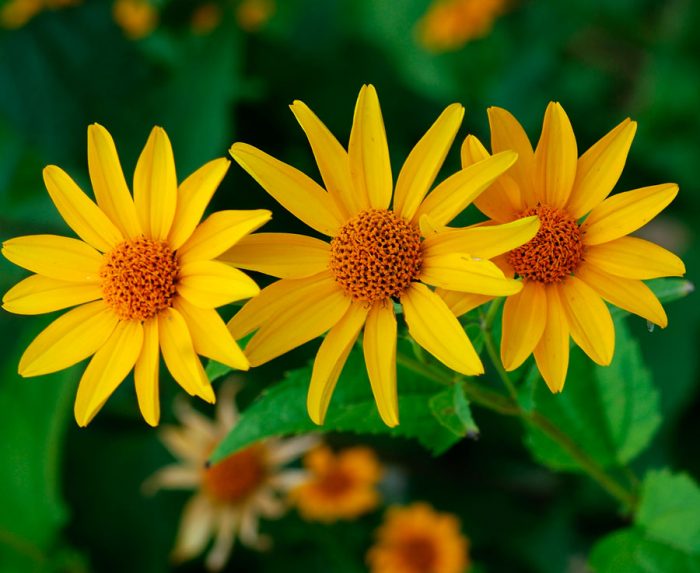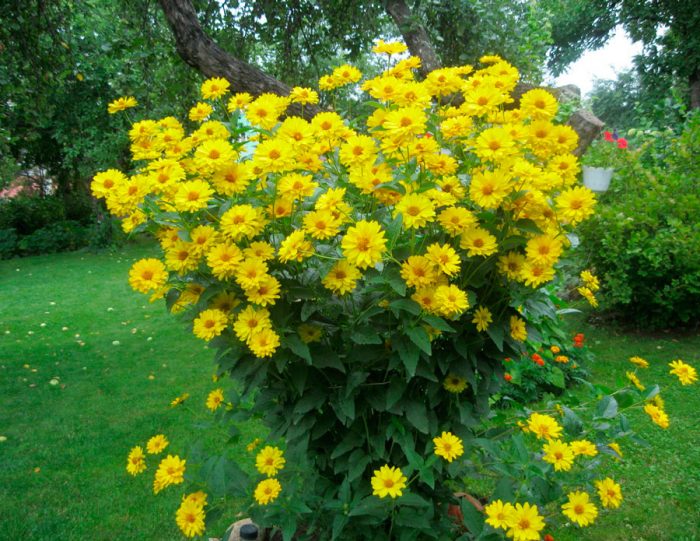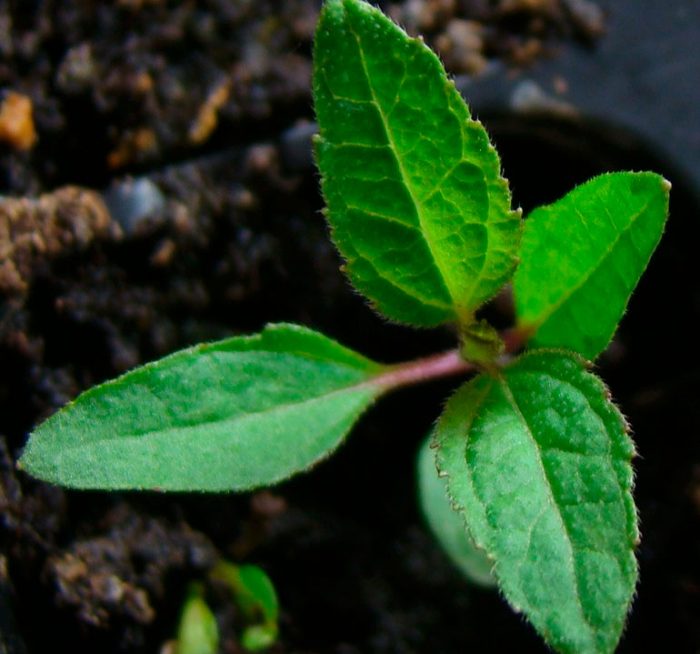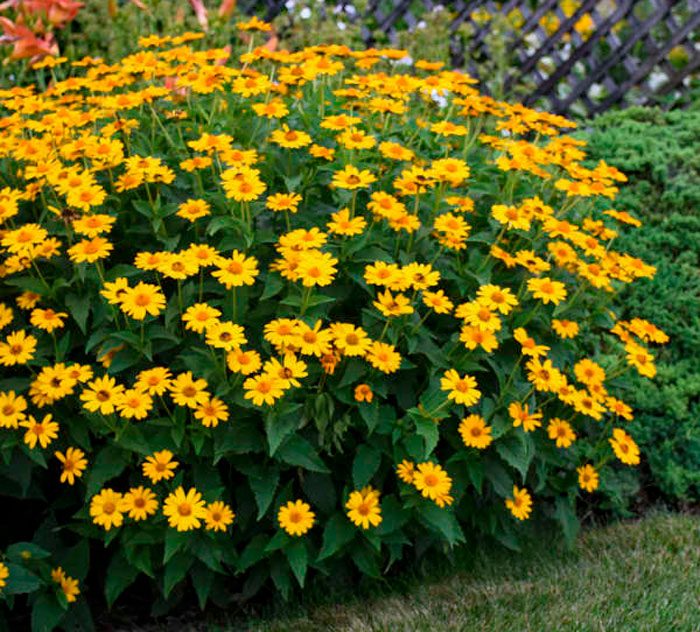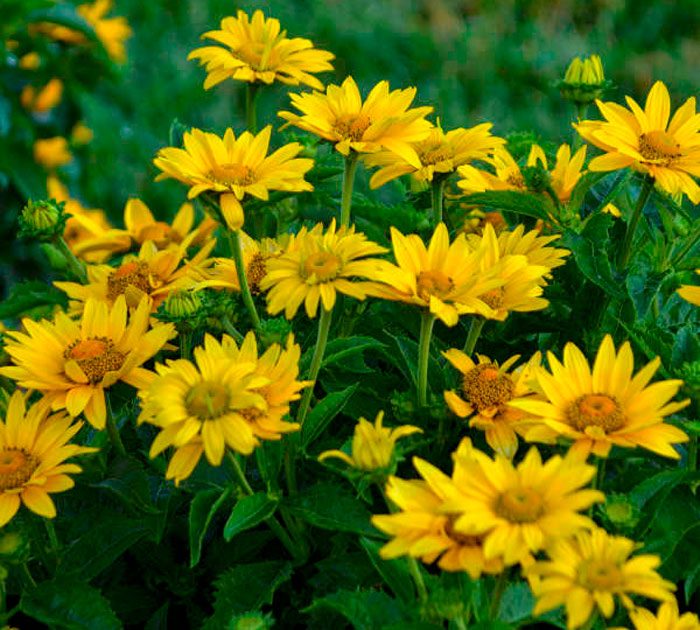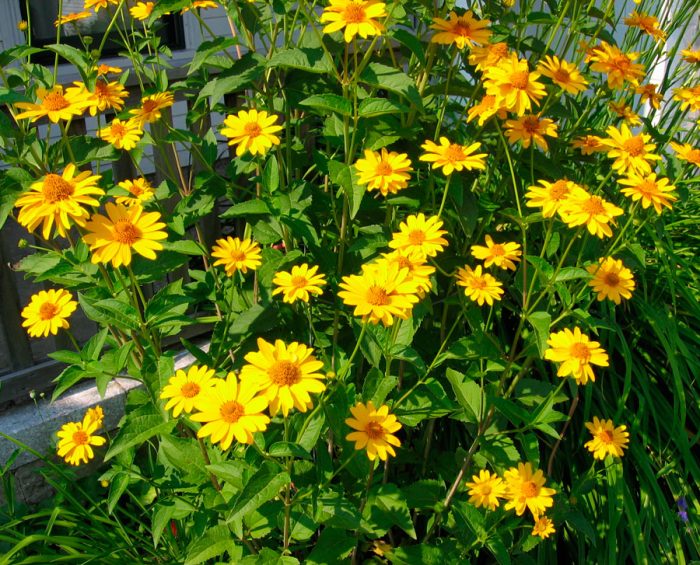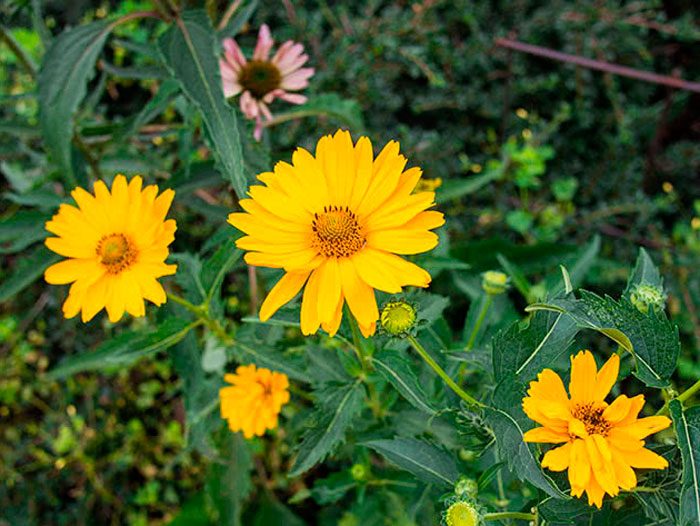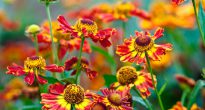The genus of herbaceous annuals and perennials Heliopsis is a representative of the Asteraceae or Asteraceae family. In nature, they can be found in North and Central America. The name of the plant heliopsis is translated as "sun-like", this is due to the fact that the shape of the inflorescence is very similar to the real sun. This genus unites more than 10 species. A typical species of this kind is sunflower heliopsis (Heliopsis helianthoides); it is its hybrids and varieties that are most often cultivated by gardeners.
Content
Features of heliopsis
Branched and straight shoots of heliopsis have a height of about 1.6 m. Oblong leaf plates are both opposite and alternate, their edge is serrated. Lush panicles consist of inflorescences, which are semi-double, simple or double baskets, reaching 80–90 mm in diameter, they include reed flowers of yellow or orange color, as well as median tubular flowers that are orange, yellow and brown. The fruit is a bare flat achene.
Growing heliopsis from seeds
Sowing seeds for seedlings
Gardeners of heliopsis grow both through seedlings and sow its seeds directly into open soil. Sowing seeds in open ground is carried out in the middle of the spring period or in late autumn, while they are sown for seedlings in the last winter weeks.
If you decide to grow such a flower through seedlings, then prepare a soil mixture, which should include coarse sand, turf soil and peat (1: 1: 1). Half a month before sowing the seeds, it should be spilled with a strong solution of potassium permanganate, after which the container is covered with glass or foil on top. Immediately before sowing, the soil mixture is poured into a box, at the bottom of which there are holes for drainage, also do not forget to make a good drainage layer of expanded clay. Level the surface of the substrate and evenly distribute the seeds over it, then cover the container on top with glass or film and transfer it to a well-lit and warm (about 20 degrees) place where it will stay for 7 days. Note that crops need bright, but diffused sunlight.After that, the crops are transferred to a colder place (from 3 to 4 degrees), where they will stay for 30 days, during which time the seeds will undergo cold stratification. When the allotted time is up, the container is transferred to a warm place (from 25 to 28 degrees). Do not forget to systematically clean the shelter for ventilation, and it is also necessary to remove accumulated condensate from its surface.
The shelter from the container is removed only after the emerging seedlings begin to form true leaf plates. A pick of plants is carried out during the formation of their first pair of true leaf plates. For this, peat cups are used, which must be filled with a substrate (its composition is described above). Picked flowers should be transferred to a fairly cool place (13 to 15 degrees). It is very simple to care for such seedlings, for this it is necessary to water it in a timely manner, as well as to systematically gently loosen the surface of the soil mixture.
Planting heliopsis in open ground
What time to plant
Transplanting heliopsis seedlings into open soil is carried out only after the threat of return frosts has been left behind, or rather, from the second half of May to the first days of June. For planting, it is recommended to choose a well-lit area that has reliable protection from drafts. The soil should be clayey, but at the same time it is well water and air permeable. To do this, on the site where heliopsis will be grown, a twenty-centimeter layer of crushed stone must be laid under the soil and covered with sand. The leveled drainage layer must be covered with clay soil, which is previously combined with compost.
Landing rules
On the prepared site, you need to make planting holes, the distance between which should be from 0.3 to 0.5 m. Their depth should be such that the root system of the plant, taken along with a lump of earth, fits freely. After the seedlings are planted, fill all the holes with the required amount of soil, which is tamped and moistened. When growing vigorous varieties, it is imperative to install supports near the bushes during planting.
Caring for heliopsis in the garden
It is necessary to care for heliopsis grown in open soil in the same way as for most horticultural crops. To do this, the bushes must be provided with timely watering and weeding. And in order for them to remain effective as long as possible, it is necessary to pinch the tops of the stems, which helps stimulate tillering, and also remove the inflorescences-baskets that have begun to fade in time, if necessary, carry out formative pruning and a garter to the support, which can be made from a peg made of wood, a metal rod or a metal mesh frame.
Transfer
If such a crop is grown in the same place for several years, then it will gradually grow and begin to displace other garden plants from the plots intended for them. To avoid this, flowers must be removed from the soil 1 time in 5–7 years, divided into parts, which are planted in separate holes in a new area.
Watering
Such a flower is distinguished by its resistance to drought, so that it does not need frequent watering. It tolerates heat well, and does not fade during a long dry period. However, if heliopsis for a long time will feel a lack of liquid, then because of this, flowering will be scarce and relatively short. In this regard, during a prolonged drought, the bushes are watered regularly (from 2 to 3 times in 7 days), this is done in the evening or very early in the morning. For irrigation, you must use water that has warmed up well in the sun. After this procedure, the surface of the soil near the flowers is gently loosened.
Top dressing
Top dressing begins from the second year of growth, they do it regularly 1 time in 4 weeks. For this, organic matter and mineral complex fertilizer for flowering plants are alternately used.During the first season, the plants will nourish the substances that were introduced into the soil during the preparation of the site.
Wintering
If you take care of the plant correctly, then its flowering will end only closer to the second half of the autumn period. Before the frosts begin, the above-ground part of the bush must be cut flush with the surface of the site. It is not necessary to cover the root system of the bushes for the winter.
Diseases and pests
Such a plant can suffer from black aphids. If there are still very few pests on the bush, then you can get rid of them with harmless infusions of tomato, celandine, nightshade or wormwood, do not forget to pour a little liquid soap into it before spraying. If there are a lot of aphids, then it is possible to deal with it only with the help of insecticidal preparations, while the most affected bushes should be dug up and destroyed.
Heliopsis can also be harmed by fungal diseases such as rust and powdery mildew. If a grayish-white bloom appears on the aerial part of the bush, this means that it is affected by powdery mildew, brown specks on the leaf plates speak of rust infection. To save the plant, its aerial part must be sprayed several times with a solution of Bordeaux mixture (2%) or copper sulfate, and you can also use other fungicidal preparations, for example, Fundazol.
Heliopsis is very resistant to other diseases and harmful insects.
Types and varieties of heliopsis
It was already mentioned above that gardeners most often cultivate sunflower heliopsis, as well as its varieties, varieties and hybrids.
Sunflower Heliopsis (Heliopsis helianthoides)
Or heliopsis sunflower - the shoots of such a perennial plant are naked, straight and branched, they reach a height of about 100 cm. The jagged leaf plates along the edge sharpen to the top. The color of the inflorescences-baskets is golden yellow.
Heliopsis rough (Heliopsis helianthoides var. Scabra)
This is a type of sunflower heliopsis, which is a plant about 150 cm high. The upper part of the branchy shoots is rough and lignifies over time. Short-petiolate opposite leaf plates have an ovoid or elongated-oval shape; they are serrated along the edge. The inflorescences of the basket in diameter reach 60–70 mm, they include yellow tubular and golden reed flowers. Such a plant began to be cultivated in 1819.
The best varieties of heliopsis include the following:
- Benzinggold... A large bush is decorated with semi-double inflorescences-baskets, which include orange tubular and yellow reed flowers.
- Winter Sun, or Heliopsis Lorraine Sunshine... The height of such a compact plant is about 0.9 m. On the surface of its silvery-grayish leaf plates, veins of a dark green color are clearly visible. During flowering, yellow baskets appear on the bush.
- Heliopsis variegated Sunburst... On the cream-colored foliage, dark green veins are clearly visible. Simple inflorescences-baskets have a golden yellow color.
- Venus... The plant has powerful shoots, the height of which is about 1.2 m. In diameter, the inflorescences-baskets reach about 12 centimeters, they are painted in a golden yellow hue.
- Asahi... The height of the bush is only about 0.8 m, it is decorated with terry inflorescences.
- Sommerzwerg... In height, such heliopsis reaches about 0.6 m, it is covered with lush foliage of a dark green color, and during flowering it is decorated with a large number of golden-yellow inflorescences.
- Sonnenglut... The height of the bush with shiny dark green leaf plates is about 1.2 m. Baskets are orange-yellow.
- Waterberry Gold... The height of the bush is up to 1.2 m. This plant blooms for a very long time with semi-double bright yellow inflorescences.
- Ballerina... A bush about 1.2 m high is decorated with large inflorescences and leaf plates.
- Summer Sun... This plant is drought tolerant and reaches a height of about 100 cm.Terry baskets are about 70 mm in diameter, they are painted in a deep yellow color.
- Prairie Sunset... The height of the plant is about 1.6 m. The shoots are dark green with a purple tint, and the golden-yellow baskets have an orange center.
- Summer Knights... The rich yellow baskets have an orange disc in the middle.
Gardeners also cultivate varieties such as: Summer Pink, Summer Green, Goldgrunhertz, Golden Ball, Midwest Dreams, Sommerzonne, Tusken Sun, Goldgefider, etc.


Watch this video on YouTube

